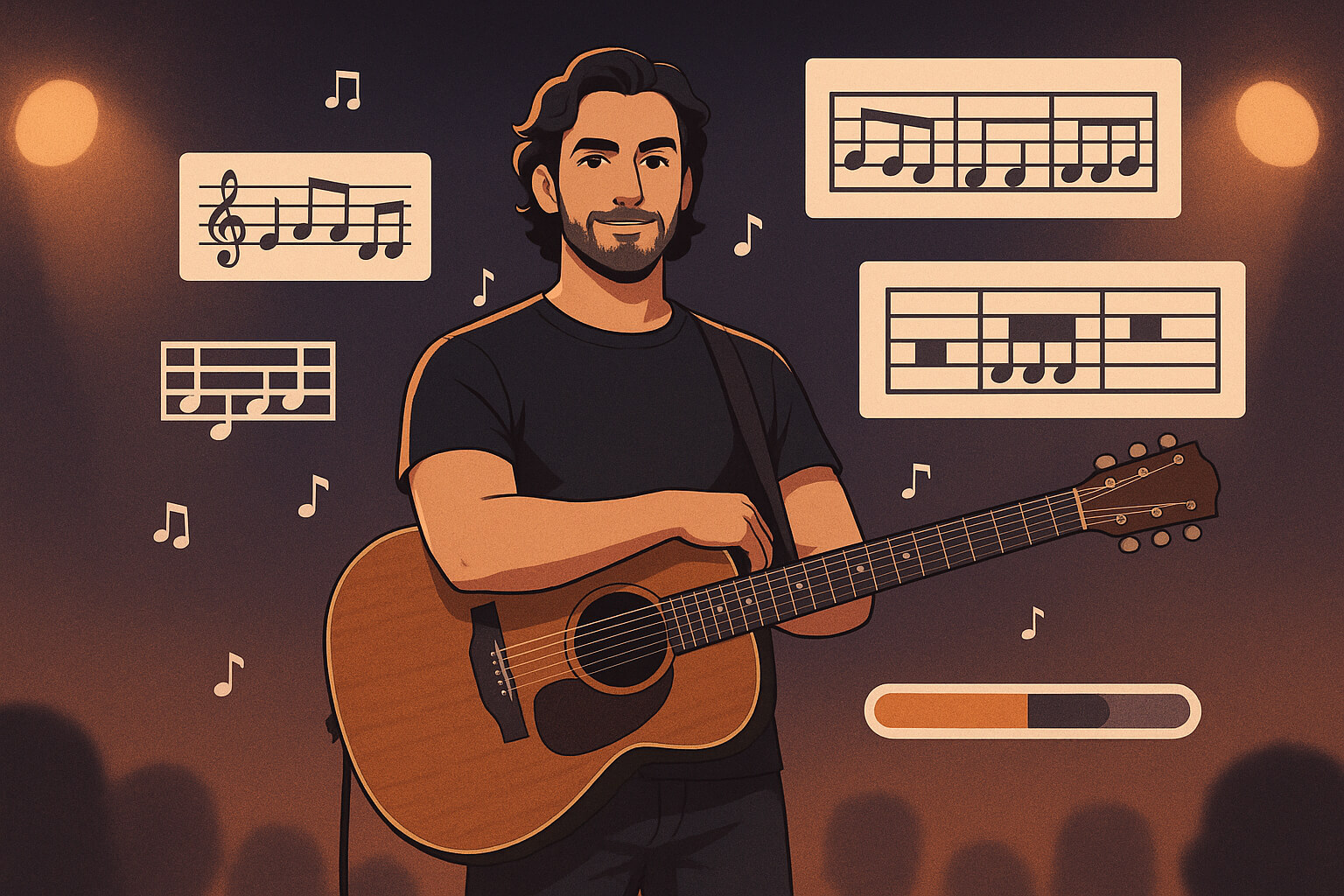August 04, 2025

Let’s be honest: memorizing music can feel like a grind. But it doesn’t have to.
Whether you're prepping for a recital, jamming with friends, or chasing a personal goal, there's a smarter (and way more fun) approach than endlessly repeating notes until they stick.
Here's the truth: Fast memorization is less about talent and more about strategy.
Let’s dive into a practical, musician-approved roadmap for locking in your music quickly and confidently — and enjoying the process along the way.
Before you pick up your instrument, map the terrain:
Why it works: Your brain remembers stories better than raw data. Knowing the “narrative” of the music gives your memory context.
Try this tool: Tonic – Interactive Music Theory Tool to break down song structures visually.
Trying to memorize an entire piece in one sitting? That’s like trying to eat a sandwich whole.
Bonus tip: Label each phrase (A, B, C, etc.) and create a “phrase map” — it helps mentally organize your progress.
App to explore: forScore – digital sheet music reader that lets you annotate and chunk sections visually.
Close your eyes. Picture your fingers moving, your breath flowing, the sound resonating.
This isn’t just daydreaming — it’s mental practice, and it works.
Why it’s powerful:
Do this right before bed to engage your subconscious overnight. It’s like hitting save on your musical hard drive.
Explore: Modacity – a practice app with built-in visualization timers and focus modes.
Fast practice = sloppy habits.
Use a metronome or tempo-slowing app to control pace and avoid rushing.
Recommended tool: Amazing Slow Downer or Anytune — slow down audio without changing pitch.
Singing activates auditory memory and connects your inner ear with muscle memory.
This trick is gold for instrumentalists — especially pianists, guitarists, and string players.
Read: Effortless Mastery by Kenny Werner — a mindset-shifting guide for musicians, full of techniques to connect with music emotionally.
Playing the same thing over and over might feel productive — but it’s not always efficient.
Shift your focus to:
Your brain thrives on novelty and challenge — not autopilot.
App to try: Brilliant Practice – built for musicians, using learning science to optimize repetition and progress tracking.
You’ve nailed the parts — now test the whole.
Practicing under “performance pressure” builds real-world confidence and locks in memory faster.
Want to level up? Stream a mini performance to friends via Zoom or post to a private YouTube playlist. Feedback = faster growth.
The more senses you involve, the deeper the memory.
Try apps like SoundSlice — slow down videos, annotate sections, and loop difficult phrases interactively.
The real key to fast memorization? Connection.
When you feel the music — when it resonates with your story, your energy, your curiosity — memorization becomes a side effect of immersion.
Don't just play it. Live it. Own it. Make it yours.
Stay up to date with the latest tips, expert insights, product reviews, and step-by-step guides to help you grow, create, and succeed—no matter your industry or passion.